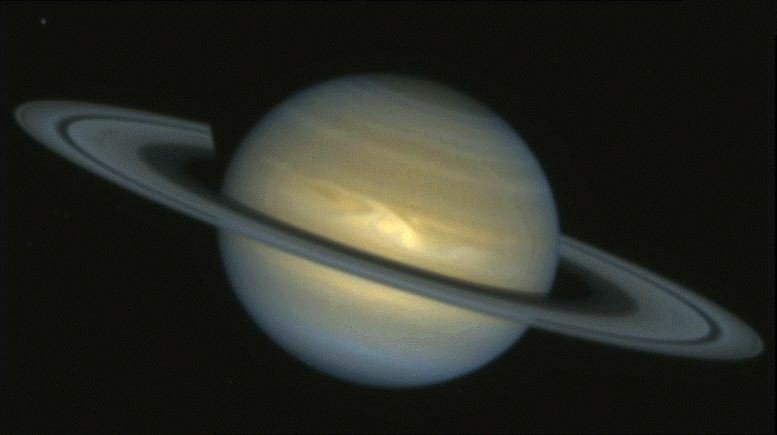New Young Solar System Has Two Jupiters and Two Saturns

A toddler star which is only two million years old and 500 light years away has been spotted by researchers. The young solar system has four planets: two are Jupiter-like, and two are Saturn-like planets. What is also amazing about this solar system is that it has extreme ranges of orbits – the planet at the edge is over a thousand times further from its star compared to the innermost planet.
The young star is surrounded by a disc of dust and ice – also known as protoplanetary disc, which is an area where planets, moons, asteroids and other space objects from that stellar system start forming.
A remarkable thing about this star is that it hosts a hot Jupiter, which is a massive planet that orbit close to the star. Hot Jupiters were the first kinds of exoplanets discovered, astronomers being puzzled because they were too close to the host stars to have been able to be formed in situ.
A team of researchers at the University of Cambridge used the Atacama Large Millimeter/submillimeter Array (ALMA) to check out that stellar system and look for siblings of the hot Jupiter. The images from ALMA showed three gaps in the disc, which should be caused by three other gas giant planets that orbit the star.
CI Tau and Four Giant Planets – Two Hot Jupiters and Two Saturns
The star is called CI Tau, and it’s positioned in a productive stellar nursery of the galaxy. The four planets have very different orbits. The one closest to the star – the hot Jupiter, has an orbit similar to the one of Mercury. The farthest planet has an orbit three times bigger than the one of Neptune. The two outer planets have a similar mass to the one of Saturn, while the inner planets are almost 1-10 times the mass of Jupiter.
What baffles the astronomers is that only 1% of the stars have been seen to host Jupiters, but the majority of the hot Jupiters ever seen are older than CI Tau.
The first author of the study, professor Cathie Clarke from Cambridge’s Institute of Astronomy, stated:
“It is currently impossible to say whether the extreme planetary architecture seen in CI Tau is common in hot Jupiter systems because the way that these sibling planets were detected – through their effect on the protoplanetary disc – would not work in older systems which no longer have a protoplanetary disc.”
The next steps for the researchers is to continue analyzing the puzzling system and learn more about the disc and the planets.
0 comments